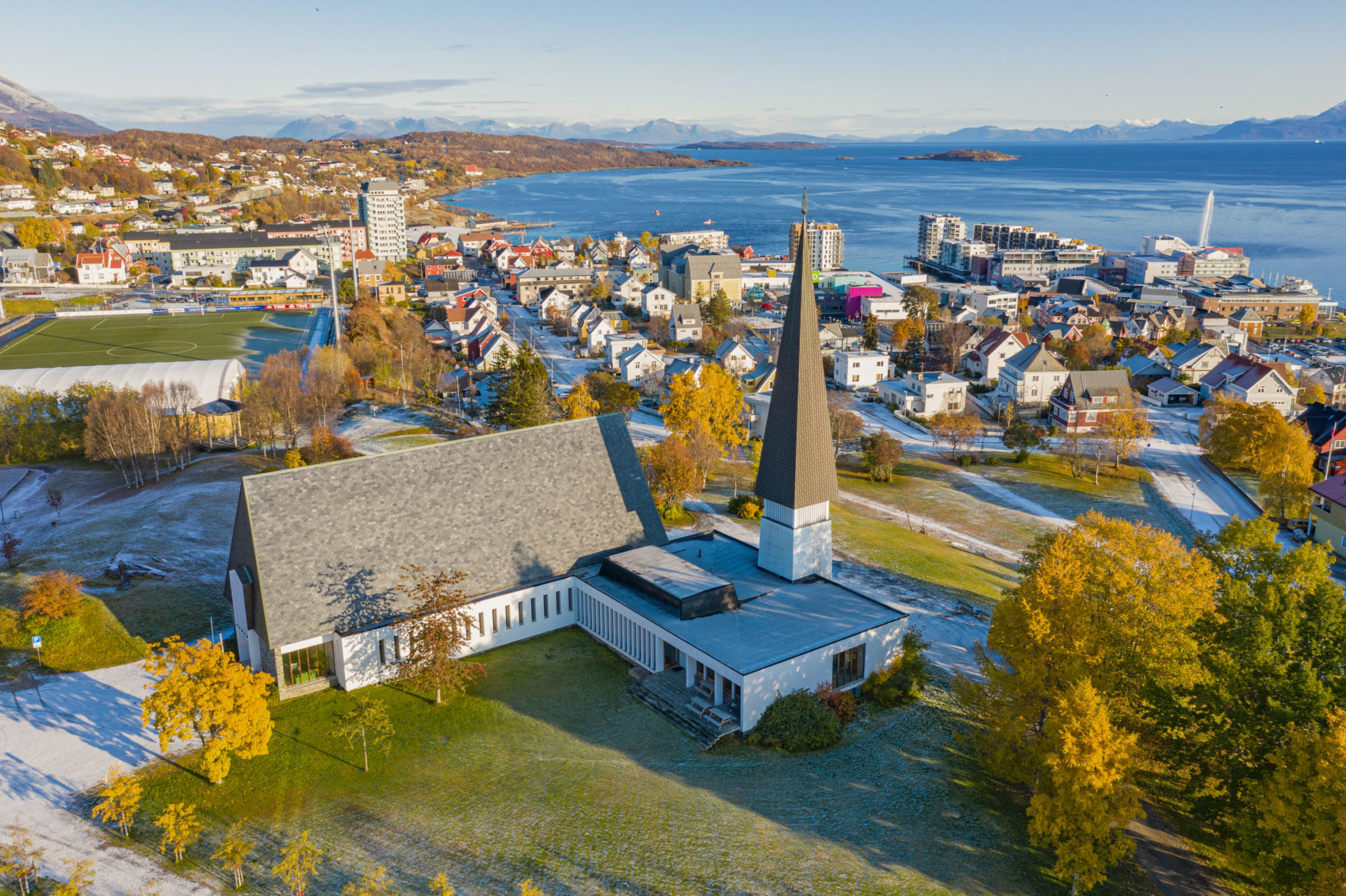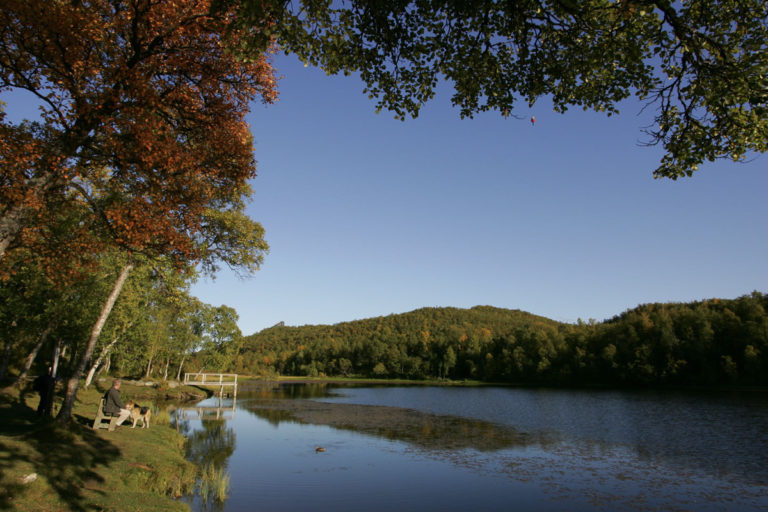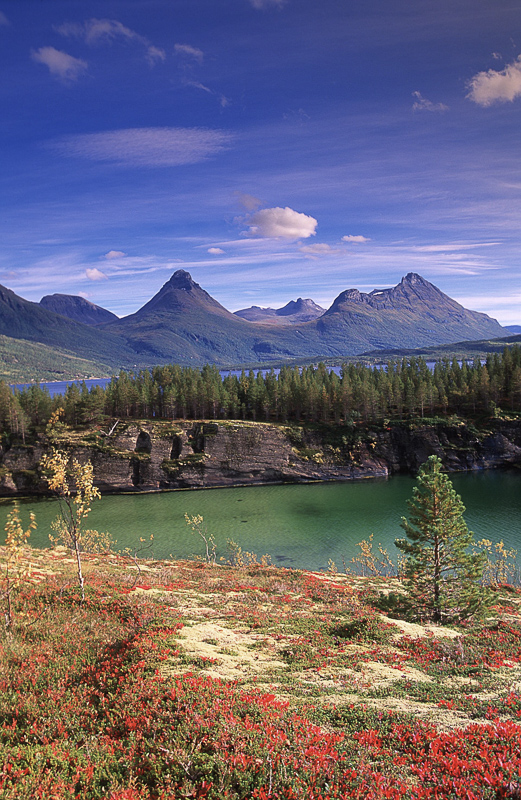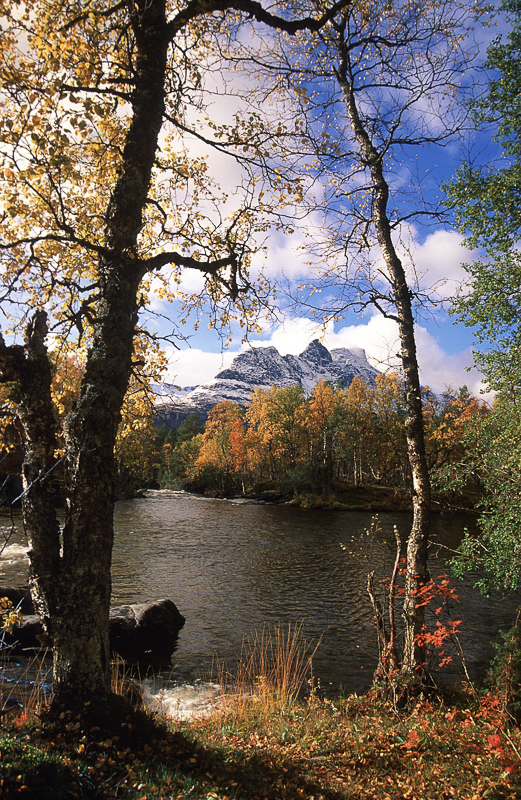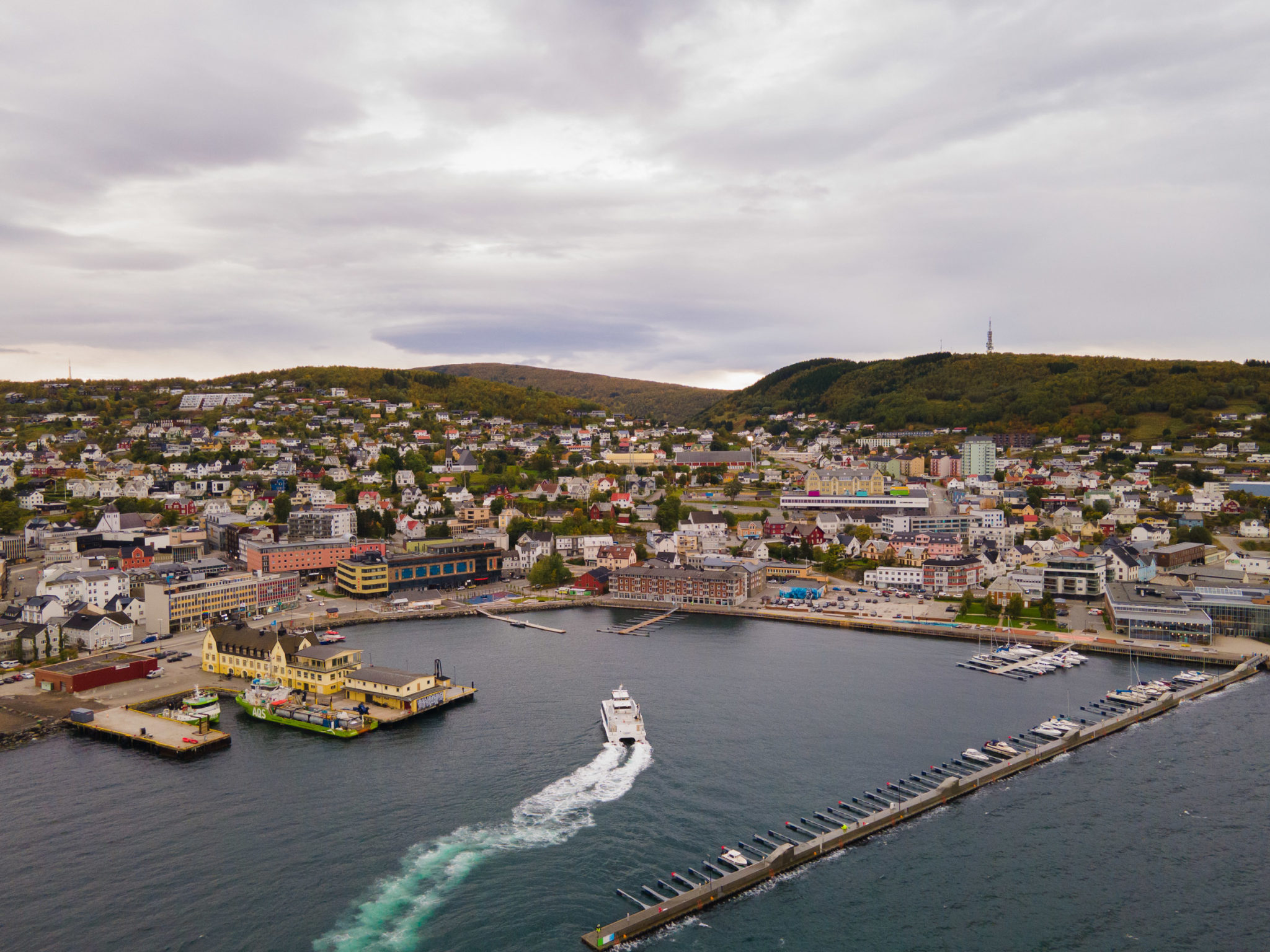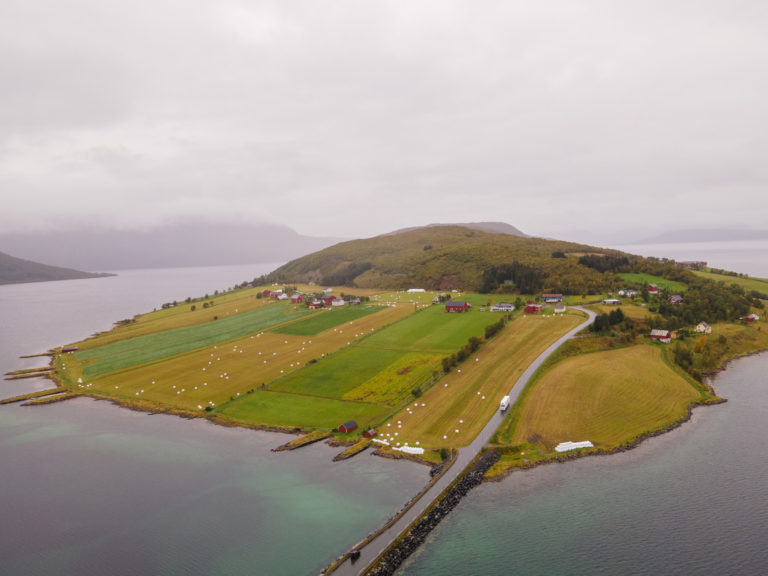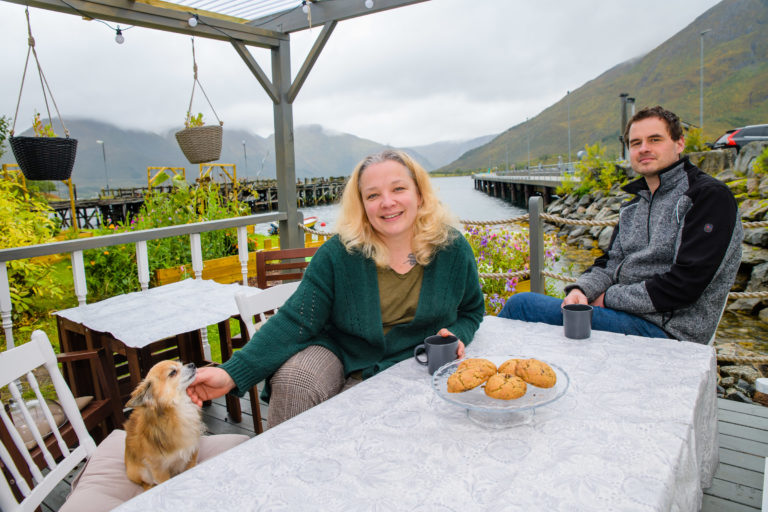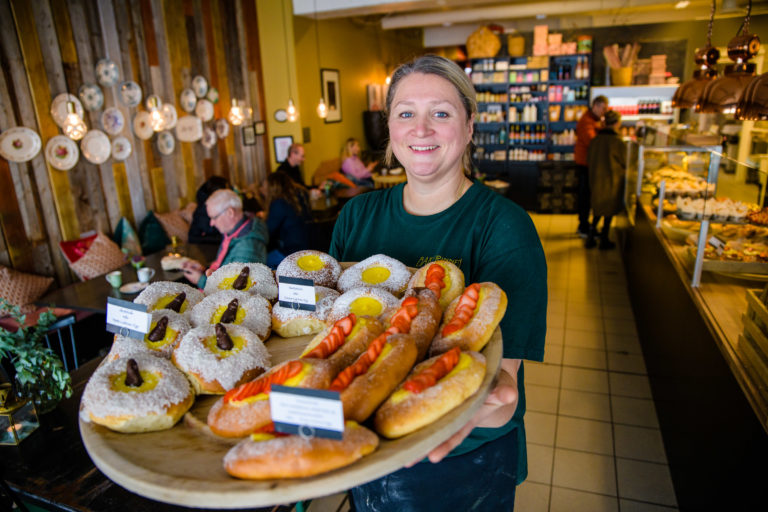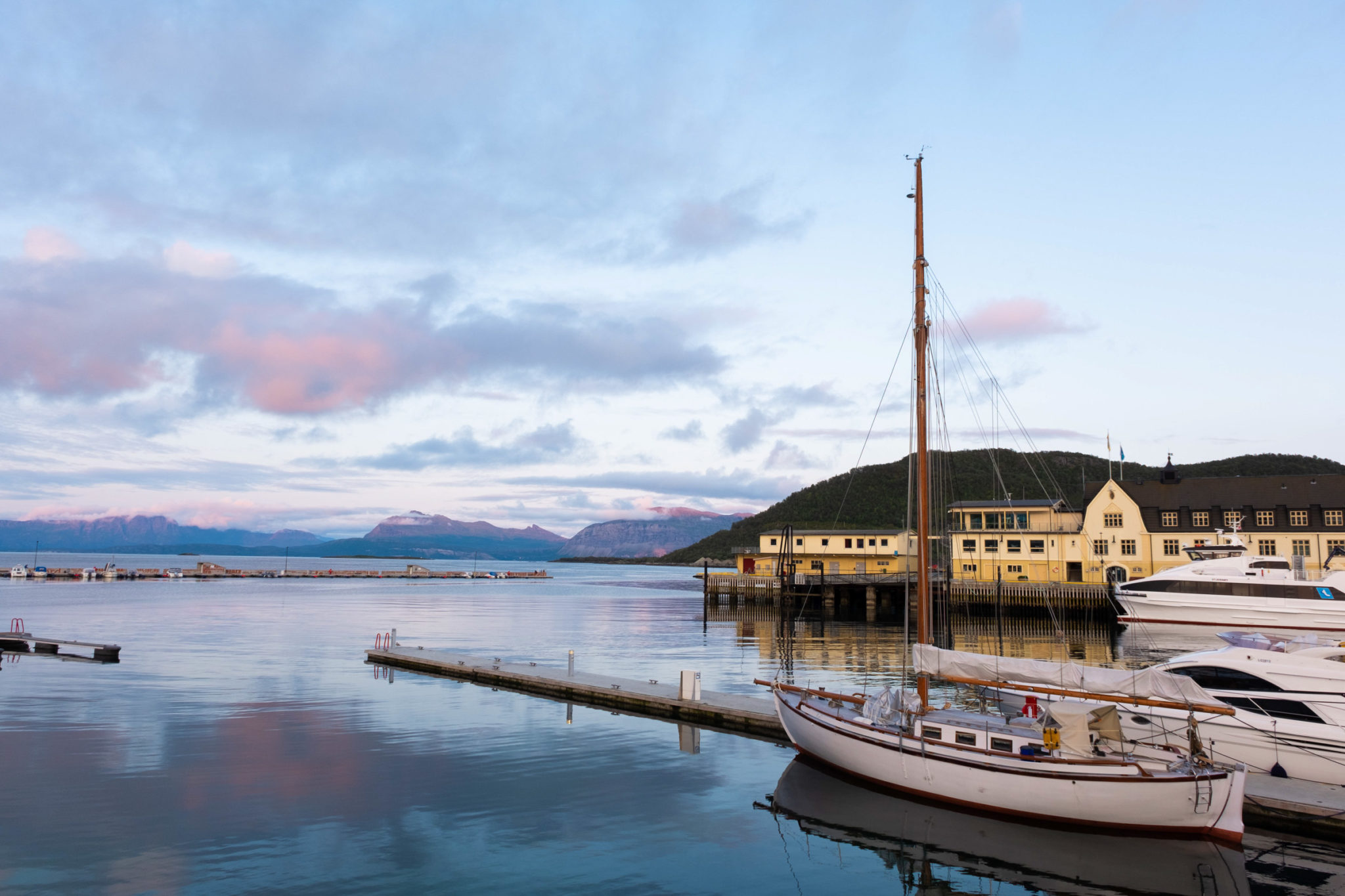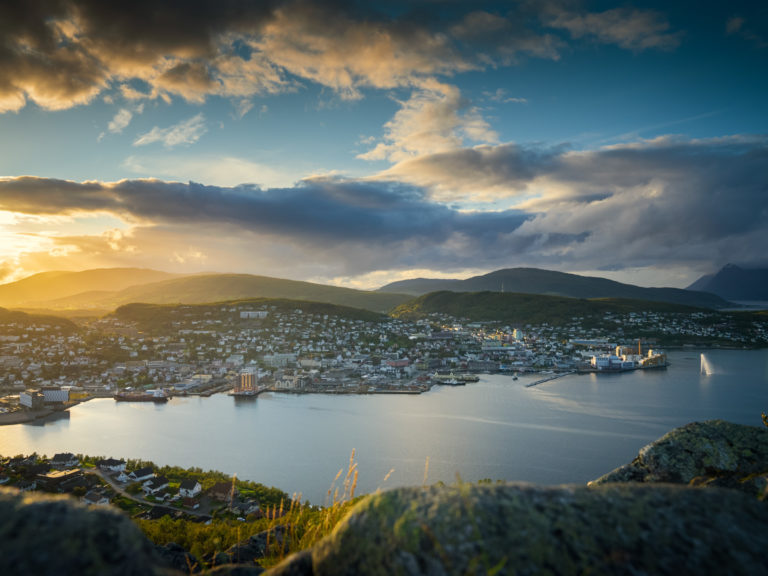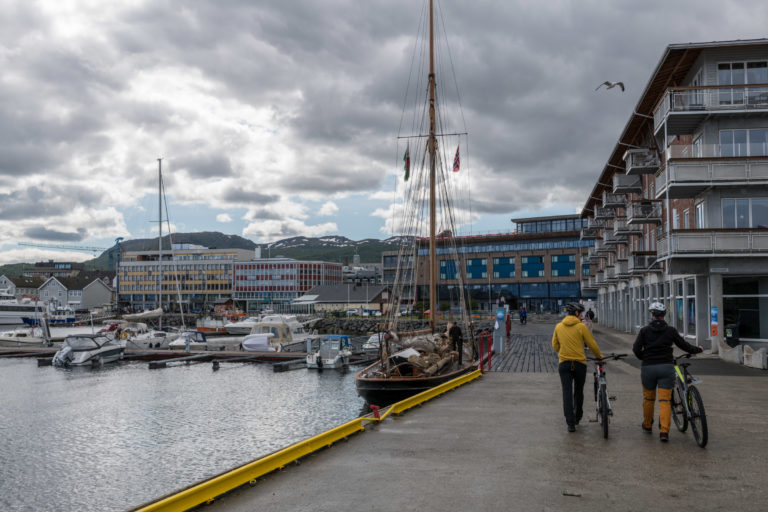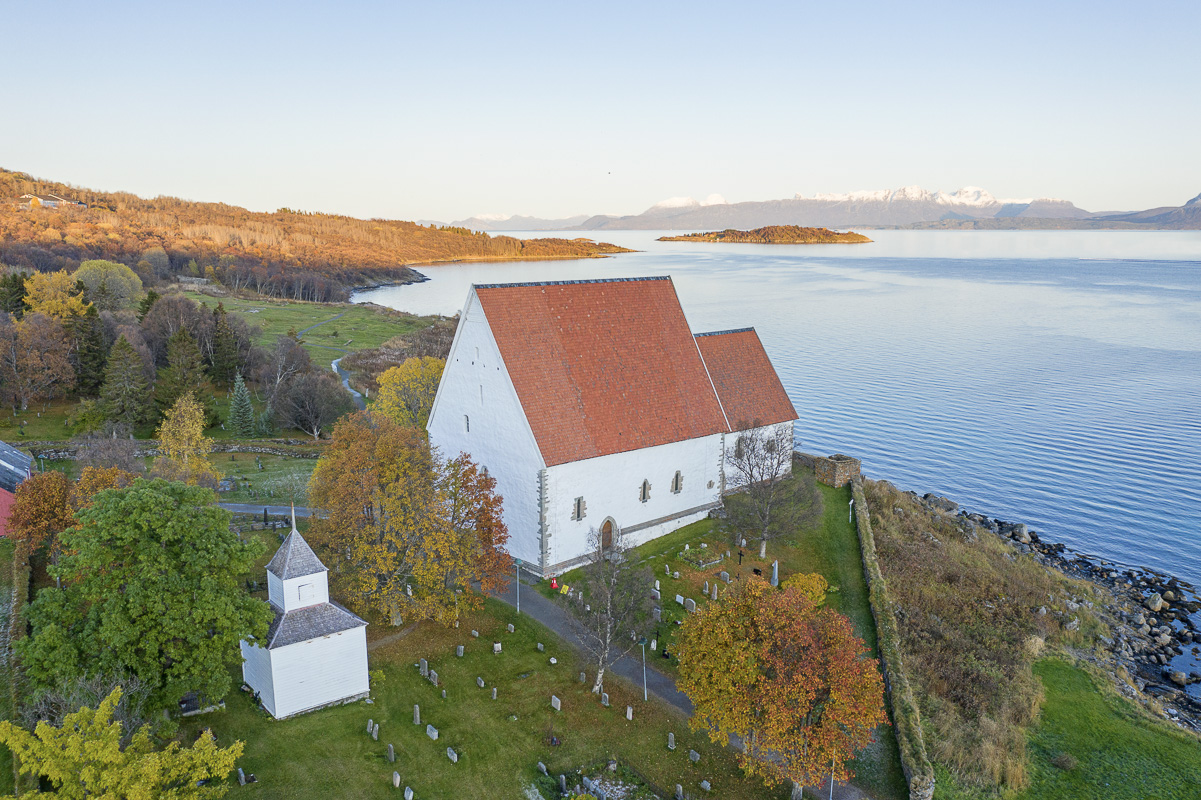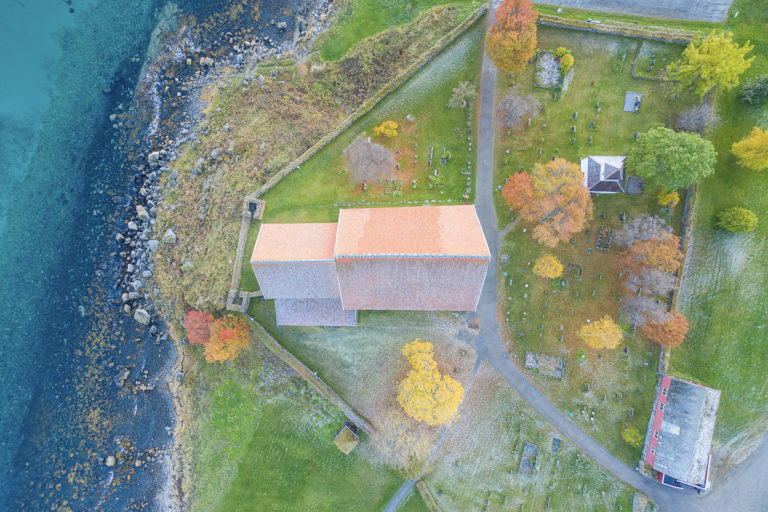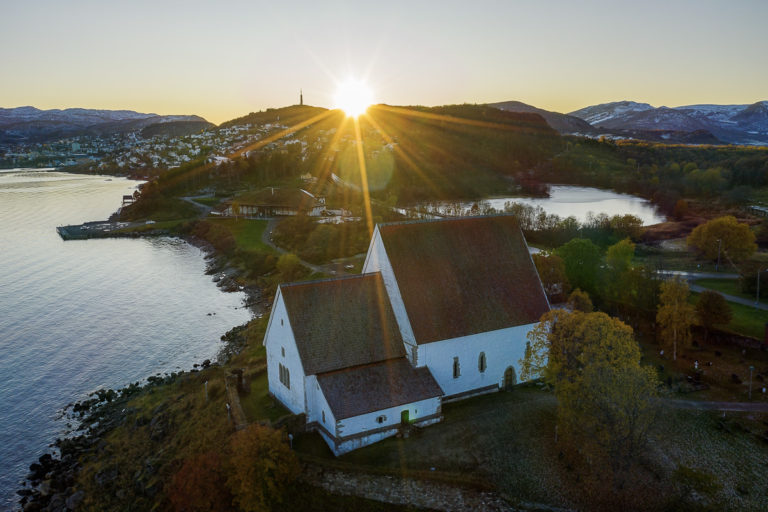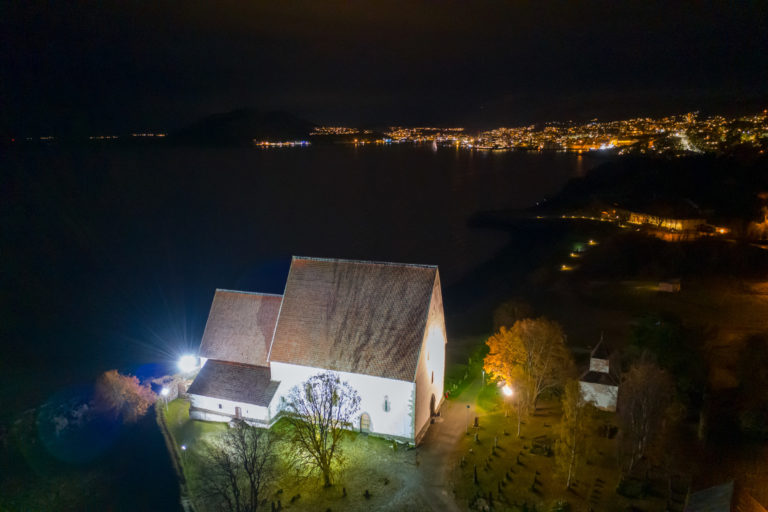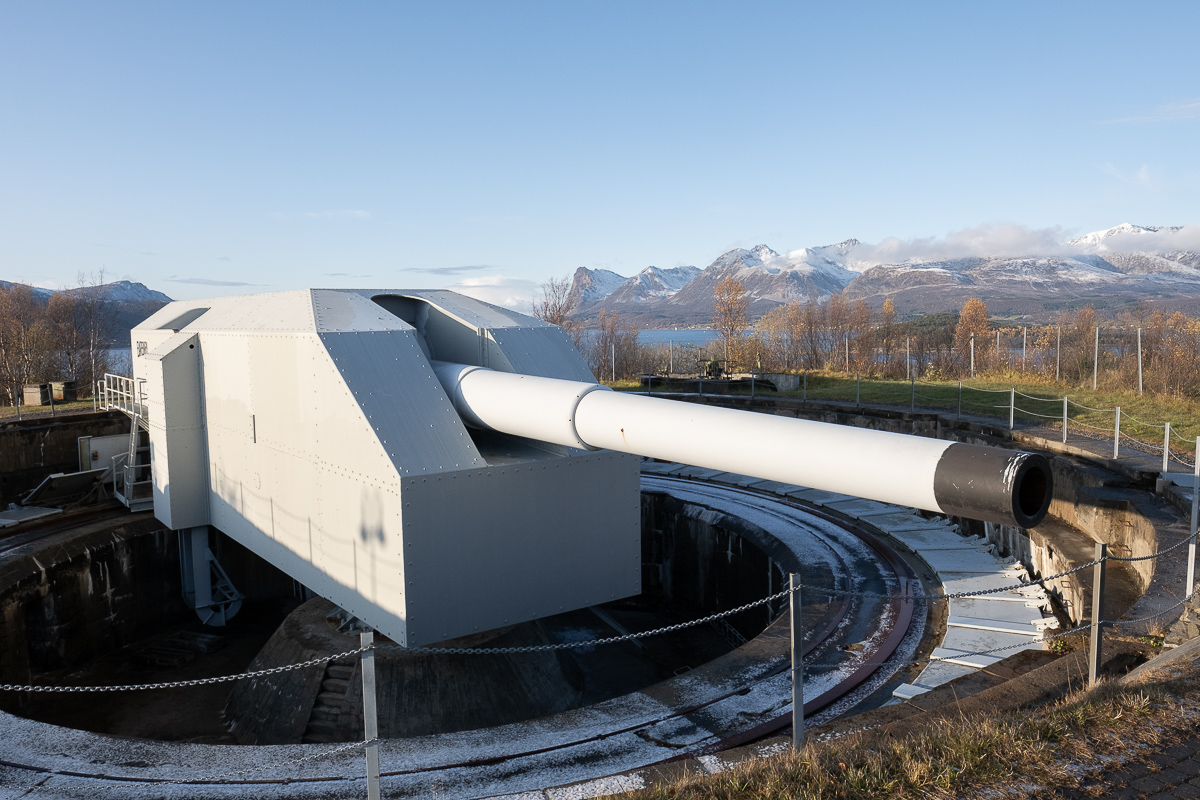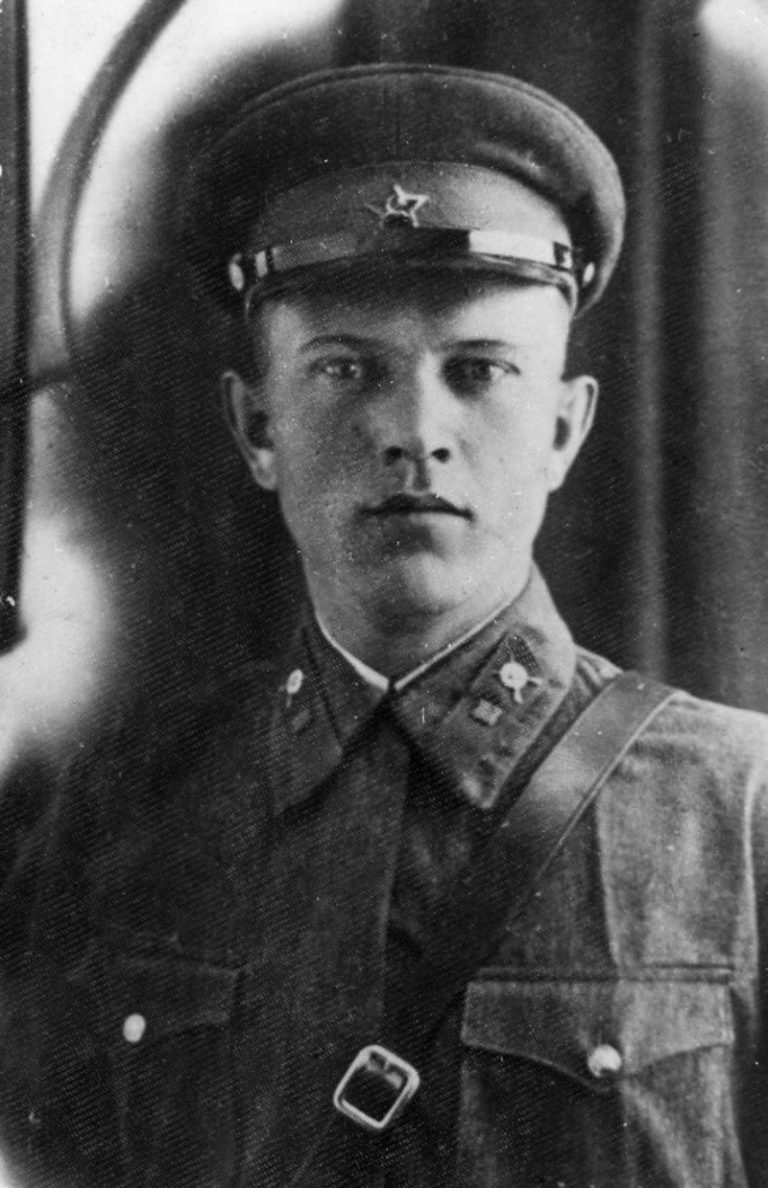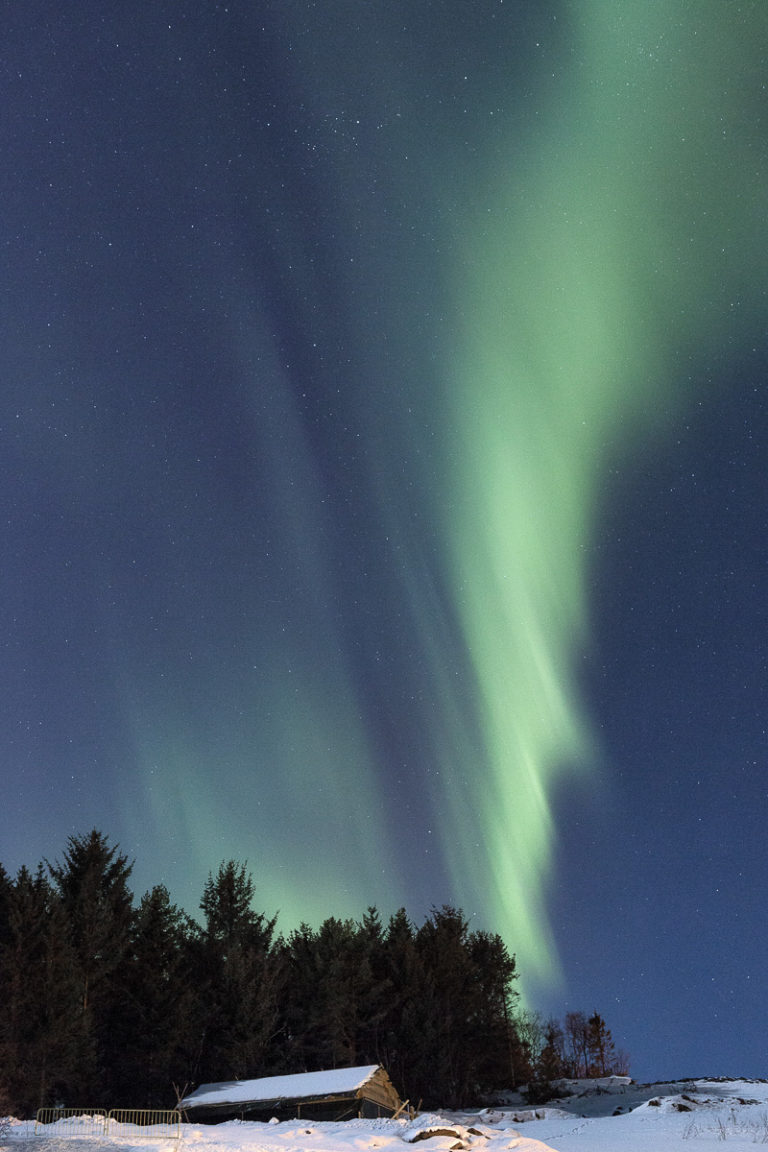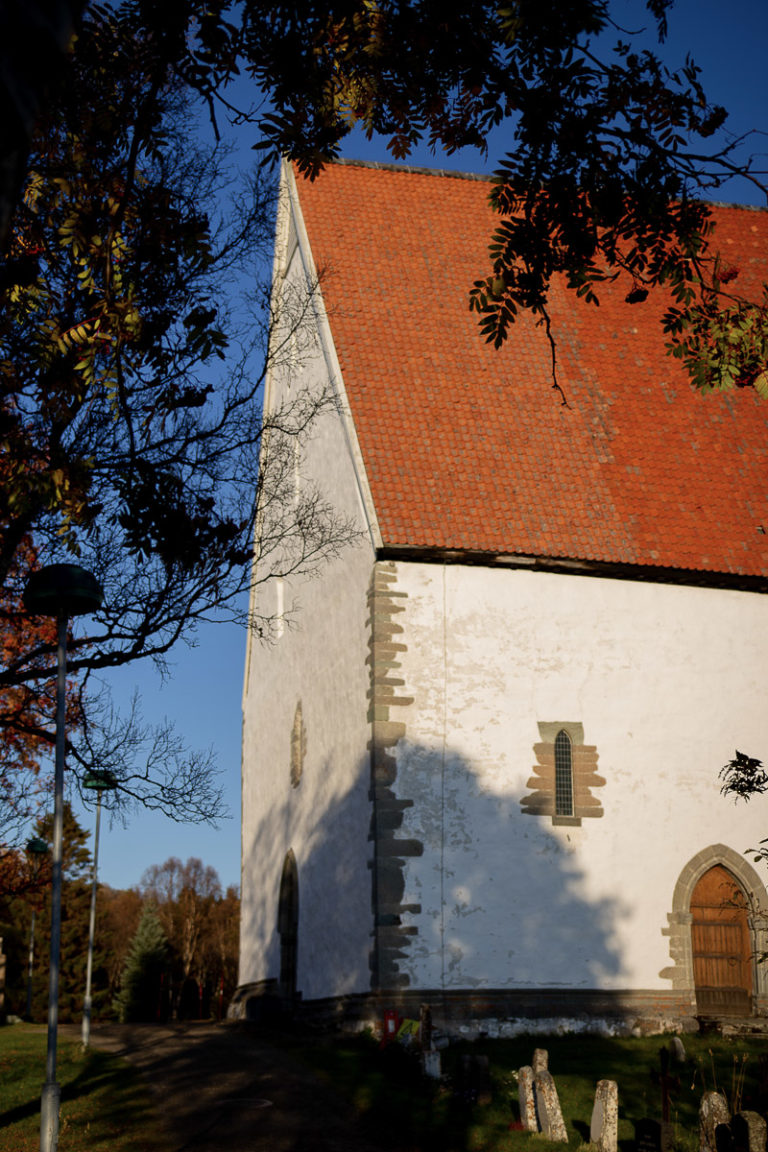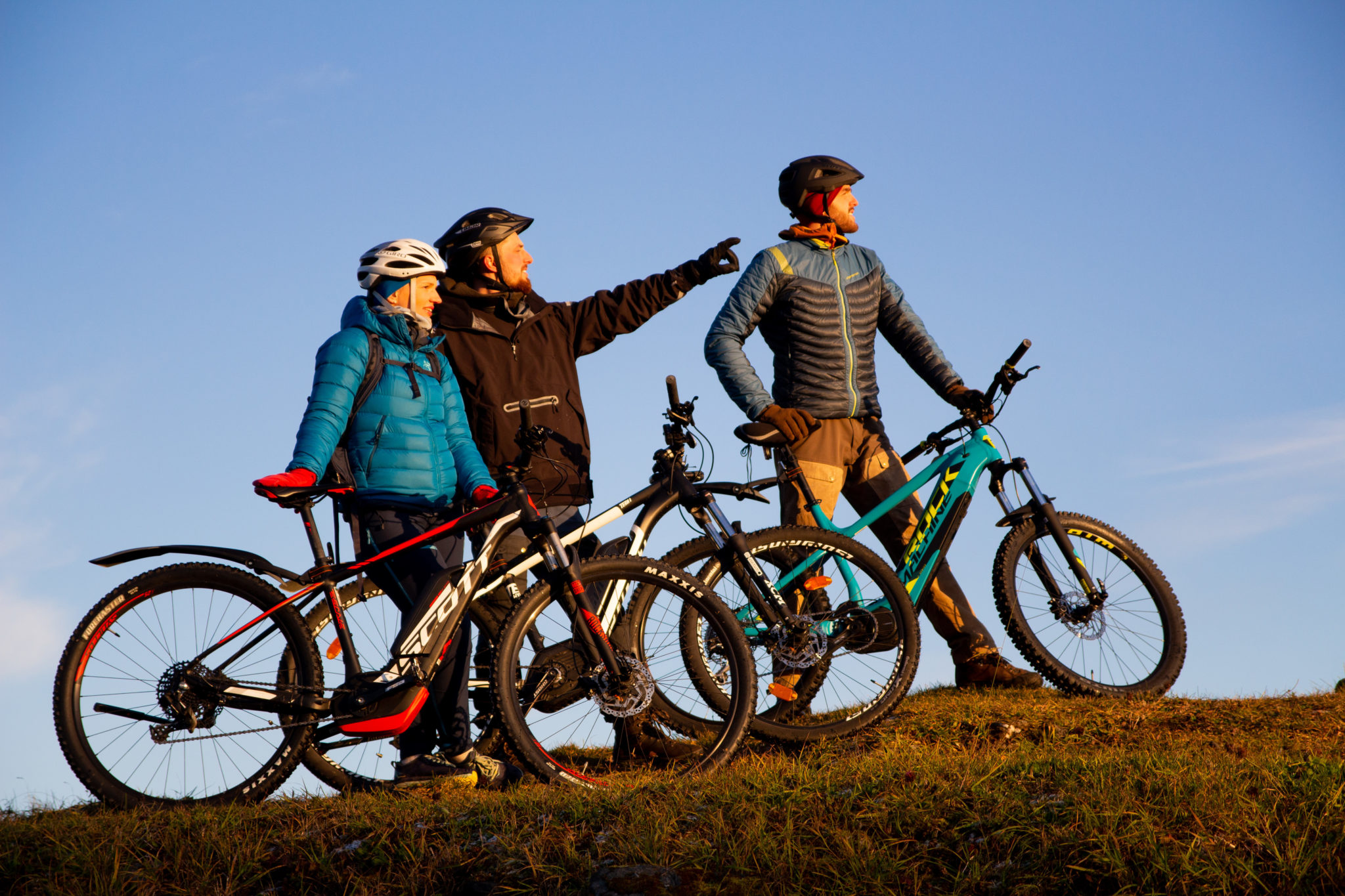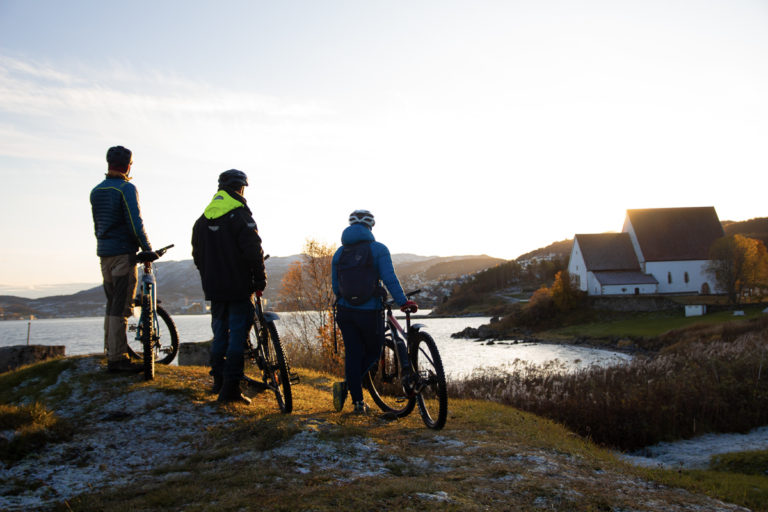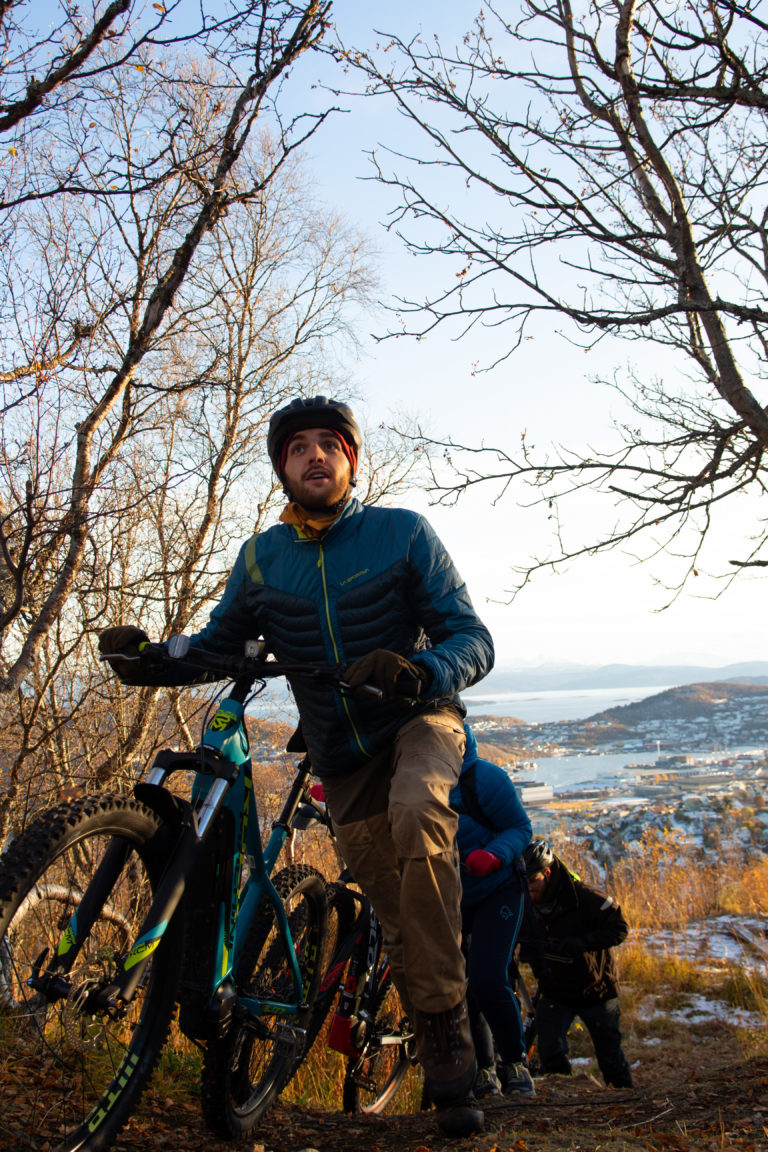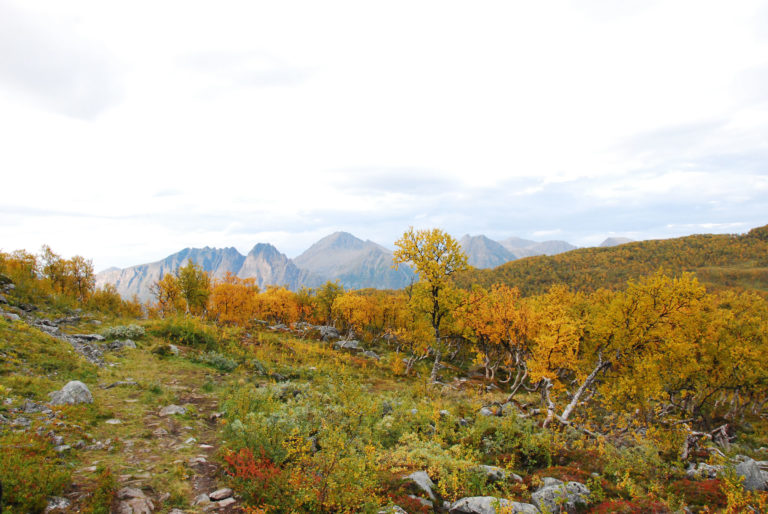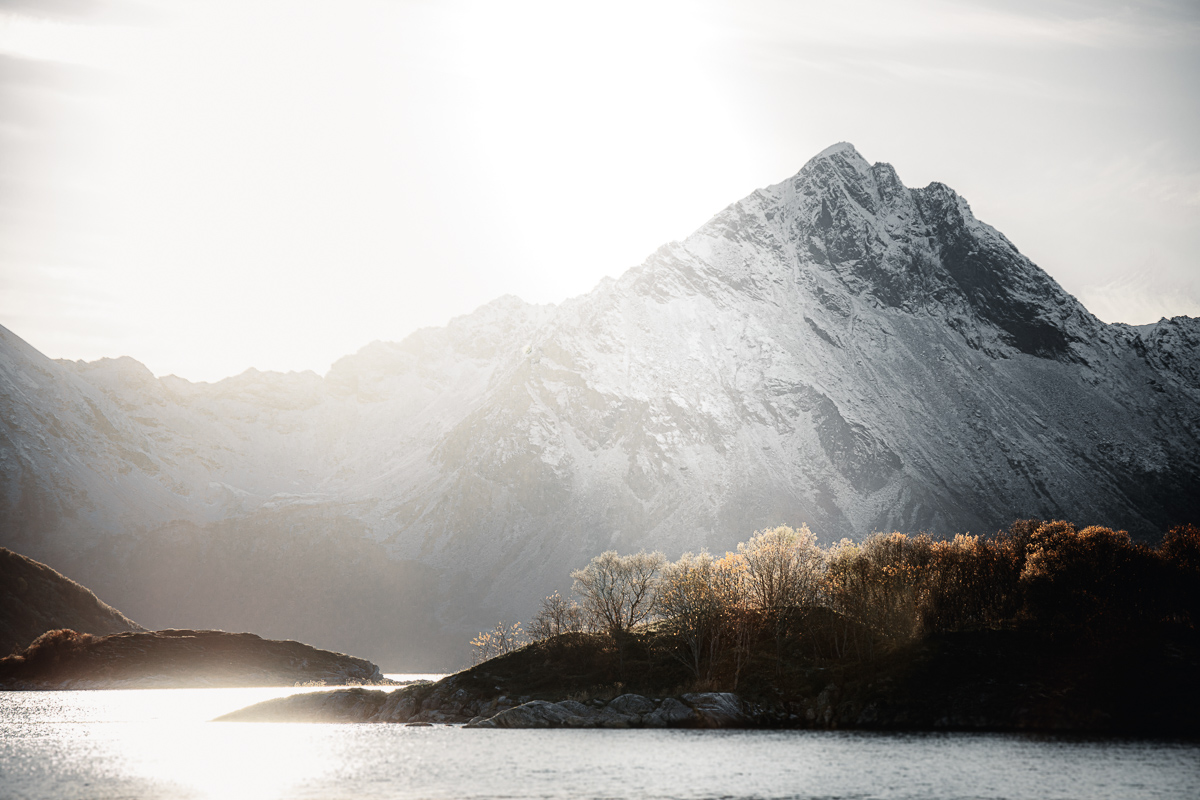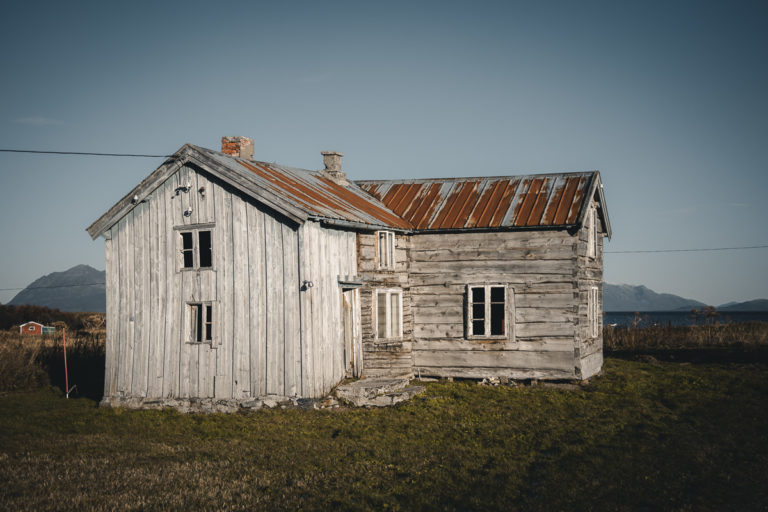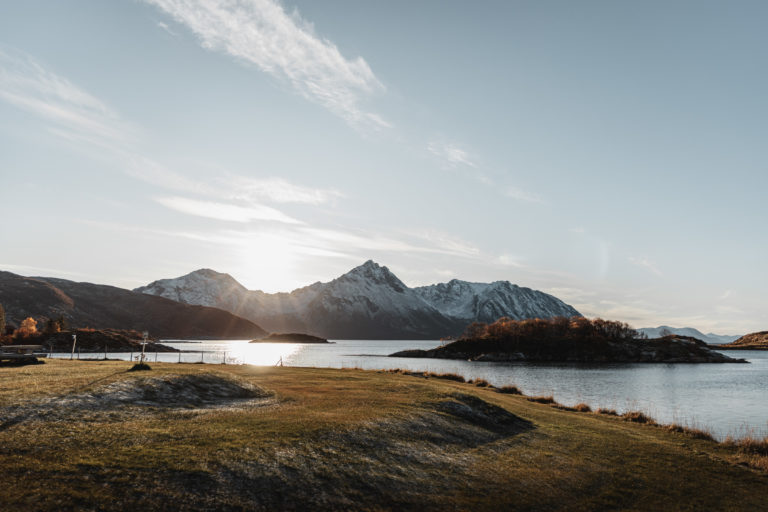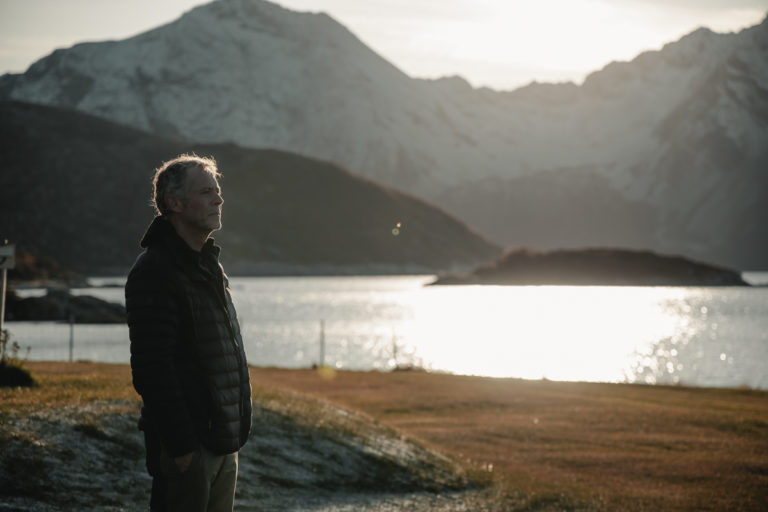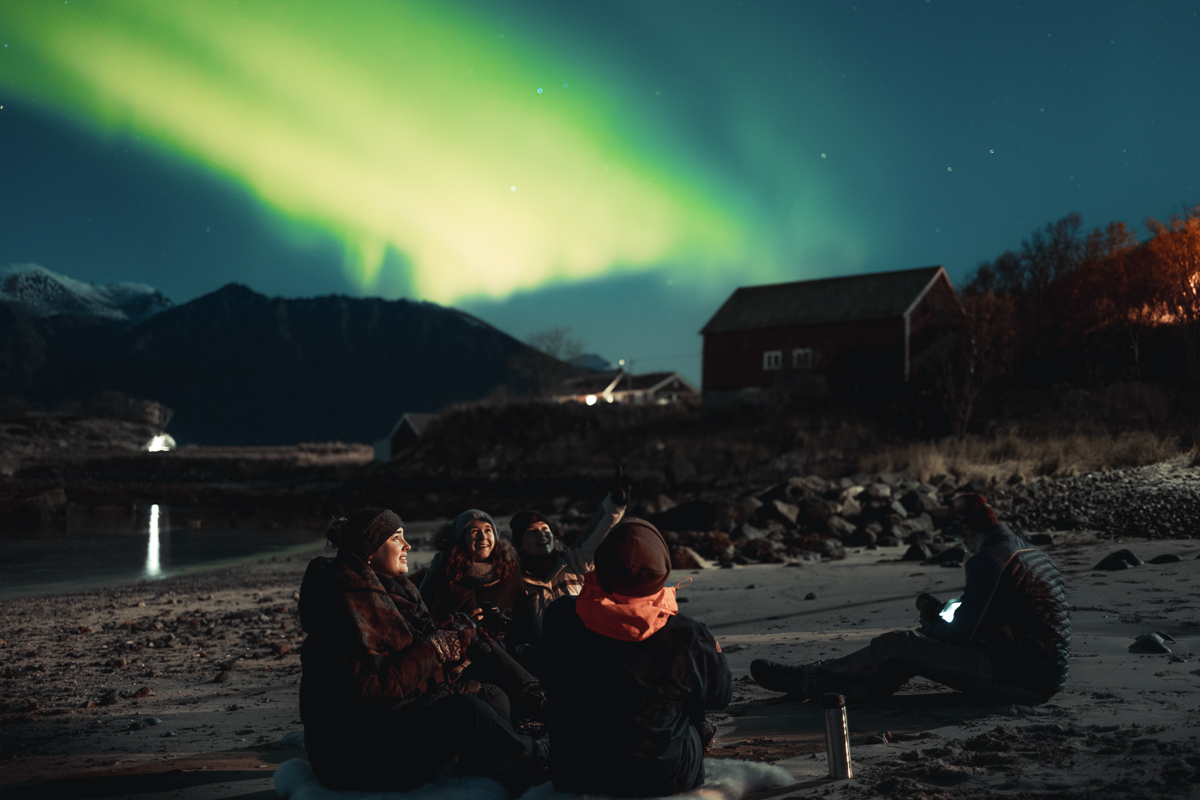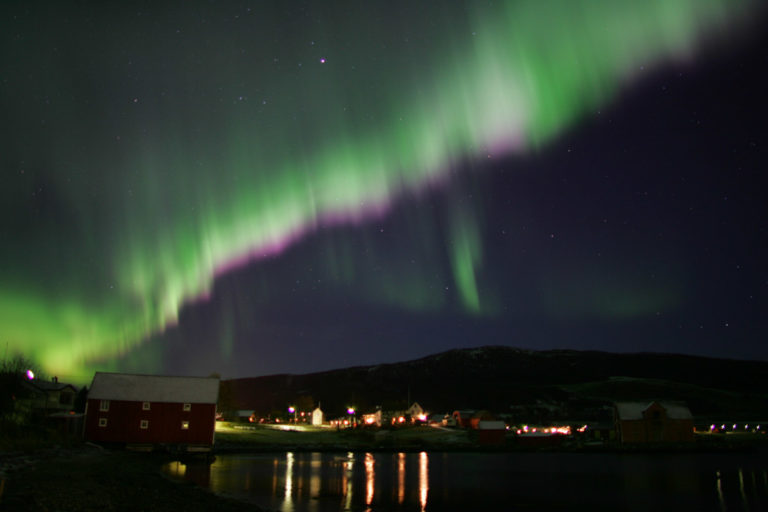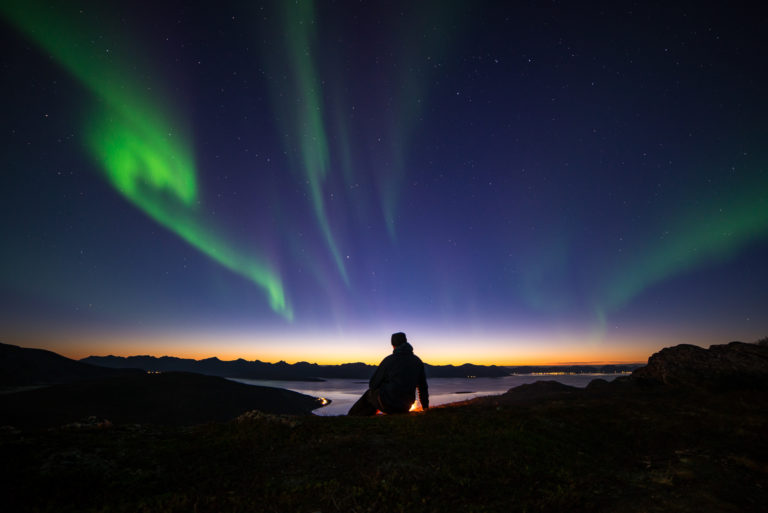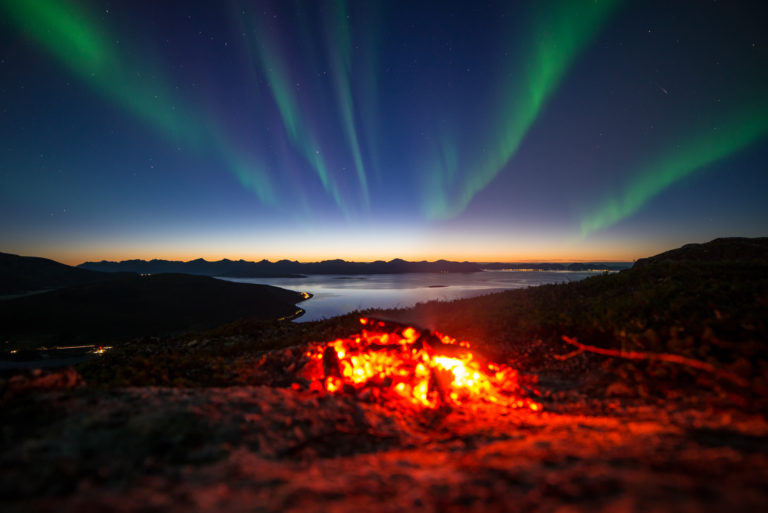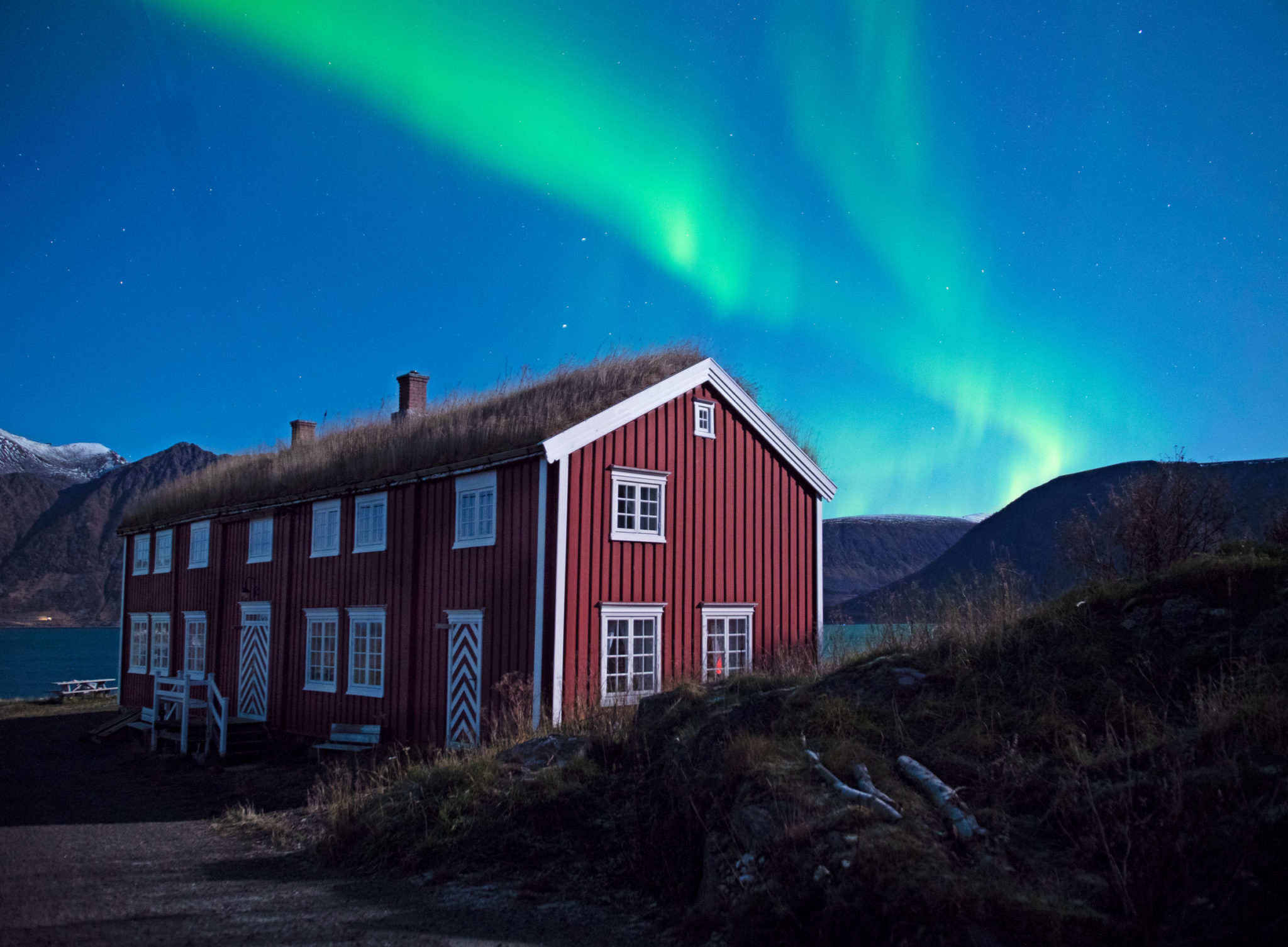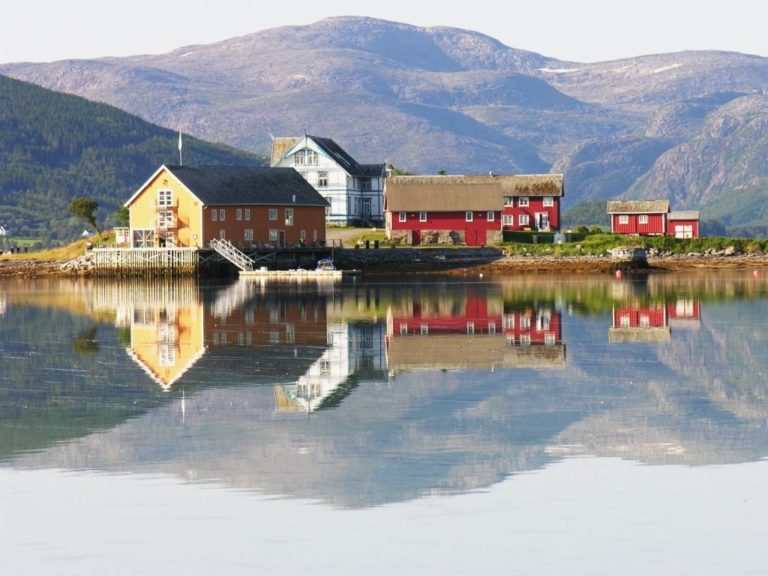Nestled between leafy forests and a blue fjord, with majestic peaks in the distance, historical Harstad looks its best in the autumn.
The city of Harstad is cosy and homely, enjoys a fabulous and easily explored fjord-and-mountain location, has a rich history and best of all; the food is to die for. Ask the locals, they’ll tell you that the autumn in the best time of the year. The scenery here, 200 miles inside the Arctic circle, is a green surprise: Sheltered from the ferocious Atlantic by the Vesterålen and Lofoten archipelagos, the warming effect of the Gulf Stream is felt. Spending some autumn days here is thus far less extreme than the latitude should indicate.
When the lush forest turns into autumn mood…
Already in late August, the forest seems to be closing business for this year, the undergrowth withering and crumbling. By September, the leaves start to change colour, aspens turn lemony yellow or bright red, rowans turn orange or red and the birches bright ochre. Only the alder stays green. Sometimes in September, it’s at its maximum, before a stormy night ends it all. In October, the low sunshine is allowed down into the leafless forest, playing with long shadows, blinking dewdrops and leaves on the ground. The decay has a melancholy beauty.
Autumn is harvest time
The surprisingly mild climate is also beneficial for the local agriculture. The fields are full of local vegetables and potatoes, and people are busy harvesting everywhere. Kvæfjord, the “garden of Northern Norway”, is a green surprise at this latitude. You could stop at Refsnes Matglede for a taste of the local produce, either as a snack or to bring home. Another green haven is the island of Sandsøy in the north.
Harstad’s restaurant scene is surprising
Harstad is not a big city, only some 25 000 people live here. All the more surprising is the quality of dining here. The restaurant Umami is a much praised and well-reviewed gourmet restaurant run by young chefs. Come here for that perfectly composed menu. Bark is another local favourite, with à la carte dishes made from local ingredients. The view from the restaurant is to die for. Røkenes farm, dating from 1750, serves local food in lovely, historical ambience. Go for a full evening, or drop in to their open house for their much loved Sunday lunch. Dining in Harstad usually requires reserving a table.
The cosy city centre invites to a stroll
The city of Harstad started to emerge at the end of the 19th century. In the little and highly walkable city centre, there is a mix of turn-of-the-century wooden houses, some striking art nouveau buildings and functionalism. Some good shopping awaits you here, and you can stop by a cosy café to feel the Harstad vibe. Bakerinnen (“The bakeress”) sells tempting pastry and could be Harstad’s most popular lady. Another recommended address is Skafferiet, a delicatessen selling the produced from the local farmers, and could be where you stock up on gifts.
Harstad is the cultural capital of the North
Harstad is also a cultural centre with numerous festivals, concerts and performances of all genres. The “Culture House” Harstad Kulturhus, has an ambitious calendar with something going every week-end and maybe mid-week too. Stand-up and more informal concerts take place in some of Harstad’s bars.
Visit the world’s northernmost medieval church
Harstad is a new city, little more than 100 years old. However, history goes much further back in the area. The medieval church of Trondenes, dating from the 12th to the 15th century is a little treasure trove, filled with gothic artworks spared from the ravages of the reformation. The church is surrounded by 12th c. fortress remnants, from where you have a commanding view of the fjord.
All of a sudden, you’re 800 years back in time
The Trondenes Historical Centre is found next to the church. Here you get the full historical context of Harstad. The 2500 year old bronse necklace is a treasure, as is the 1500 year old cauldron. There is a big exhibit on church art, all done wonderfully accessible. The most fun, however, is to walk around the medieval farm, inhabited by real people willing to share about their lives. The farm is lived in on week-ends in the autumn period.
Follow the tracks of Konstantin
Konstantiv Seredintsev was a Soviet prisoner of war in the second world war. His Nazi captors sent him to Trondenes to work on a military fortress. He suffered terribly from working too hard and eating too little and died after only three months. His diary, however, has been found and translated meaning we know a lot of what happened to Soviet POWs. Today you can see his exhibit at Trondenes Historic Centre, and see the remnants of the prison camp. The Adolf Gun, one of the biggest canons ever made, is in the area and can be visited if pre-booked.
How do you organise a visit to Trondenes?
It’s no problem to take a bus or taxi to Trondenes from town. However, we recommend you to walk along the “stien langs sjøen” (the path along the sea) for a good half hour. Then visit the church and the museum and have lunch in the museum café. If your energy level is still high, you can do the historic walk from the Trondenes church past Lake Laugen to the viking remnants at Altevågen bay. Because of the present situation, one is only let into the Adolf Gun on organised trips, check with the Tourist Information.
In Harstad, you can hike in easy terrain
The forested hills around Harstad can be explored on foot. There are numerous hiking trails around the city, well-marked, easy, and safe. The most famous one goes to the Keipen viewpoint, allowing a fabulous view over the Solbergfjord and the distant mountains on Senja. Close by, the Elgen steeper and more challeninging, rewarding you with even wider views. Gangsåstoppen is another viewpoint, where you see the city from above. If you’re early, you can see two ships of the Hurtigruten docking at the same time in the morning. There are numerous other trails in the forests and hills surrounding the city. For more challenging tours, you can go a little further. Hikers with stamina can hike on the island of Grytøya, around the fjord Kvæfjorden og in the mountains south of Harstad. To find a trail to suit your level, contact the local tourist board.
Bike around the Harstad autumn
A relaxing and peaceful way of exploring the Harstad landscape is to go by bike. The roads around the area have precious little traffic, and there is something new around every bend. For leisurely exploration, follow the roads. If you want more challenge, go on the trails in the forest immediately out of town. In Harstad, you can rent e-bikes, and the tourist information can tell you where to go. If a bit more adrenaline is required, the pump track at Harstad Bike Park (Harstad sykkelpark) will make your heart beat faster. Bikes and gear can be rented, and it’s extra suited for a little group of friends.
Get onto the fjord
The beautiful Vågsfjord is more than a backdrop. Kayaking is increasingly popular locally, and both beginners and intermediates will find a guided tour fun in the sheltered waters near the city. Speed addicts will be thrilled by a RiB trip, which is like a zodiac, but with a steady keel. You can easily reach the archipelago and back within a couple of hours, seeing a variety of landscapes. On a fishing trip, maybe with a veteran boat, you get in touch with the real Northern Norway, after all fishing is what we do, in a leasurely way.
Explore the islands
North of Harstad, there is a myriad of big and small islands; the green and fertile Sandsøya, the dramatically mountainous Grytøya, historical Bjarkøy and the minuscule settlements on the twin islands of Meløyvær and Krøttøy. An easy way of getting a taste of the islands is to take the catamaran boat out the islands from downtown Harstad. You can either do it as a 2-hour cruise, or leave the boat and explore one of two of the islands. This can be done by car or by bike as well. Make sure to involve the local tourist board in your planning, as there are some timetables for ferries or catamarans involved.
In mild autumn nights, the Northern Lights turn up
You have probably seen the Northern Lights photos with the green lights over a frozen lake. However, not everyone knows that the Northern Lights can turn up already in mid-August. By mid-September, they are about as frequent as in Mid-Winter. Meaning you can spot them without freezing too much. Go for a long walk in the forest with a headlamp, there are several good lookout points in the area. You can also participate in organised tours. Again, a visit to the boundlessly knowledgeable Tourist Information is a good idea.
Stay comfortably in the city centre…
There is no lack of comfortable lodging in Harstad. Several mid-range to first-class hotels are found in the city centre. As the autumn in yet undiscovered, prices can be reasonable. Found close together in the city centre, they are practical for reaching public transport, attractions, and places to dine, notably.
..or go out of town for character
In the surrounding areas, however, there are a few gems you might want to consider. The Sandtorgholmen Trading Post is a wonderfully restored turn of the century manor. Elgsnes farm has a wonderful main building from 1723. You can stay in a glass igloo to benefint the most from starry nights, northern lights and crispy mornings. And there are hammocks for rent.
Combine with Senja, Tromsø, Vesterålen or Lofoten
If you have a few days more, you could combine Harstad with some other beautiful northern locations. The island of Senja is breathtakingly scenic with excellent hiking and very peaceful nights suited for Northern Lights watching. The Tromsø nights are anything but peaceful, though. The cataran boat to Finnsnes (Senja) and Tromsø departs 2-4 times a day, depending on the day of the week. The legendary Lofoten islands and their lesser known sister islands Vesterålen are also within easy reach, and can even be seen on daytrips by rental car.
Travelling to Harstad is easy
Harstad is easily reached by air. Harstad/Narvik airport (EVE) at Evenes has good connections to Oslo by both SAS (SK)/Star Alliance and Norwegian (DY). The airport bus into town takes about an hour. The legendary Hurtigruten calls at Harstad every morning, both heading north and south. The overland combo train and bus from Oslo takes a good 24 hours, and there is a nearer railhead in Narvik connected with the Swedish railways.
Practical about Harstad
Harstad is on close to 69 degrees north, some 300 km/200 mi inside the Arctic Circle in Northern Norway. It is found northeast of the known Lofoten Islands, and south of the city of Tromsø
The Harstad/Narvik Airport (EVE) has direct flights to Oslo with SAS (SK)/Star Alliance and Norwegian (DY). The airport is an hour away from the city centre, with frequent buses. The Hurtigruten, these days operated by Hurtigruten and Havila, also calls at Harstad every day heading north and south.
Harstad has no rail connection. The nearest railhead is in Narvik, which has got a link to Sweden with the Ofotbanen Railway. For a connection with the Norwegian railway, you go to Fauske on the Nordland Line.
Harstad’s city centre has a number of good, modern and comfortable mid-range to first-class hotels. In the surrounding area, you find places with character and history. For a full overview, contact the local tourism organisation Visit Harstad.
Harstad offers a fair bit of good dining. There are also simpler places offering comfort food. Consult the website of Visit Harstad.
You can see the first Northern Lights in mid August, because the night is getting longer and darker after the midnight sun period. By mid September, you already have very good conditions. This lasts until the end of March, when daylight is eating into the best hours in the evening. By mid or late April, the night is too short and bright for the Northern Lights to appear on the nightsky.
Harstad is found directly under the Northern Lights oval and is consequently one of the places on earth with the biggest Northern Lights activitity.
You should definitely book a restaurant table ahead, as the best restaurants tend to be full. Organised tours should also be reserved ahead. Public transport cannot be booked ahead, so come early to catamarans and ferries. It’s never full on the bus…almost.
